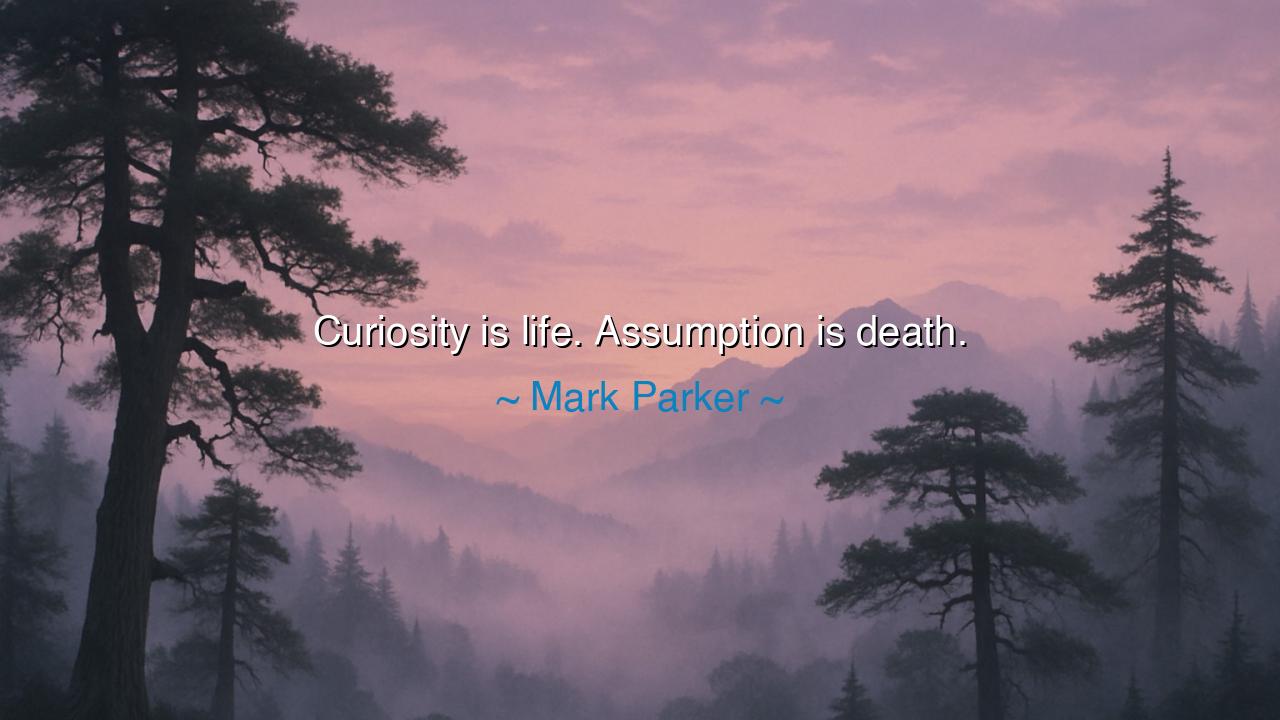
Curiosity is life. Assumption is death.






In the halls of craft and commerce, where makers trade secrets like sailors trade stars, hear Mark Parker’s flint-bright maxim: “Curiosity is life. Assumption is death.” In eight words, he draws a line between the breath and the tomb. Curiosity is the lung that fills; it is the step forward into uncharted rooms, the question that keeps the lamp lit. Assumption is the stale air of certainty; it is the shuttered window, the map mistaken for the mountain. One keeps the spirit supple; the other embalms it while it still walks.
What does he teach? That vitality begins with the posture of a learner. To be curious is to confess, “I do not yet know,” and to treat not-knowing as an invitation rather than a shame. This is not a child’s distraction but an elder’s discipline: a way of seeing that sifts the world for signal, tests belief against fact, and refuses to worship yesterday’s answers. Conversely, assumption makes us deaf to evidence and numb to nuance. It is the quiet rot that creeps into teams, marriages, laboratories, and nations when “of course” replaces “what if.”
The saying’s origin, as preserved in multiple quote anthologies, appears in Parker’s broader refrain—“Be a sponge… Curiosity is life. Assumption is death. Look around.”—a credo consistent with how he led Nike through waves of change, prodding people to question models that once worked and to keep asking better questions. Public interviews profile this habit: challenge what’s worked, resist formula, keep the lens clear; in his own words, letting success calcify “can be death.”
Consider a tale from the shop floor. A small design team, proud of a best-selling shoe, began a new season by re-using the last mold and color story—“Consumers love it; don’t overthink it.” A junior engineer—eyes bright with curiosity—asked why the forefoot kept delaminating in humid markets. The old hands waved her off: “Edge case.” She persisted, ran a climate test, and found glue failure at a temperature no one had simulated. A minor compound tweak, and warranty claims fell by half. The product manager later said, “Our assumption nearly cost us the line.” A question saved what certainty would have buried.
History gives a sterner parable. In the late 1930s, engineers at the Tacoma Narrows Bridge trusted prevailing formulas and thin-deck assumptions; some warned about aeroelastic instability, but the confidence of precedent prevailed. “Galloping Gertie” tore itself apart within months, its collapse now taught as a catechism of humility in design. When assumption rules, structures fail; when curiosity rules, we test, iterate, and live. The lesson fits any field: medicine, finance, governance—disaster so often blooms where nobody bothered to ask the next question.
How, then, shall we live this sentence? First, adopt a daily “question quota”: three genuine inquiries before you offer one opinion. Second, run a “kill-an-assumption” drill each week—name one belief your team treats as gospel, and design a cheap test to challenge it. Third, ritualize field-looking: once per month, go where your users, patients, students, or citizens actually are; observe before you suggest. Fourth, keep a “surprise log”: capture findings that contradict your expectations; revisit them until they change what you do, not just what you know.
Let leaders especially heed the warning. Culture congeals at the top first. Create rooms where dissent is safety, not treason. Reward the question that averts a million-dollar mistake more than the slick presentation that pleases the quarterly call. Remember Parker’s other counsel—challenge what’s worked; avoid the narcotic of a winning formula. Institutions die not from hostile forces alone but from the quiet hospice of assumption within.
Finally, carry the cadence like a pilgrim’s rule: Curiosity in your mornings; Assumption on your watchlist; life by learning; death by certainty. Put it on the door of your lab, your studio, your classroom, your kitchen. Ask, look, test, listen, and let the world revise you. For the ancient path to wisdom has always bent this way: the humble question opens the gate; the proud assumption bars it. Choose the way that breathes.






AAdministratorAdministrator
Welcome, honored guests. Please leave a comment, we will respond soon